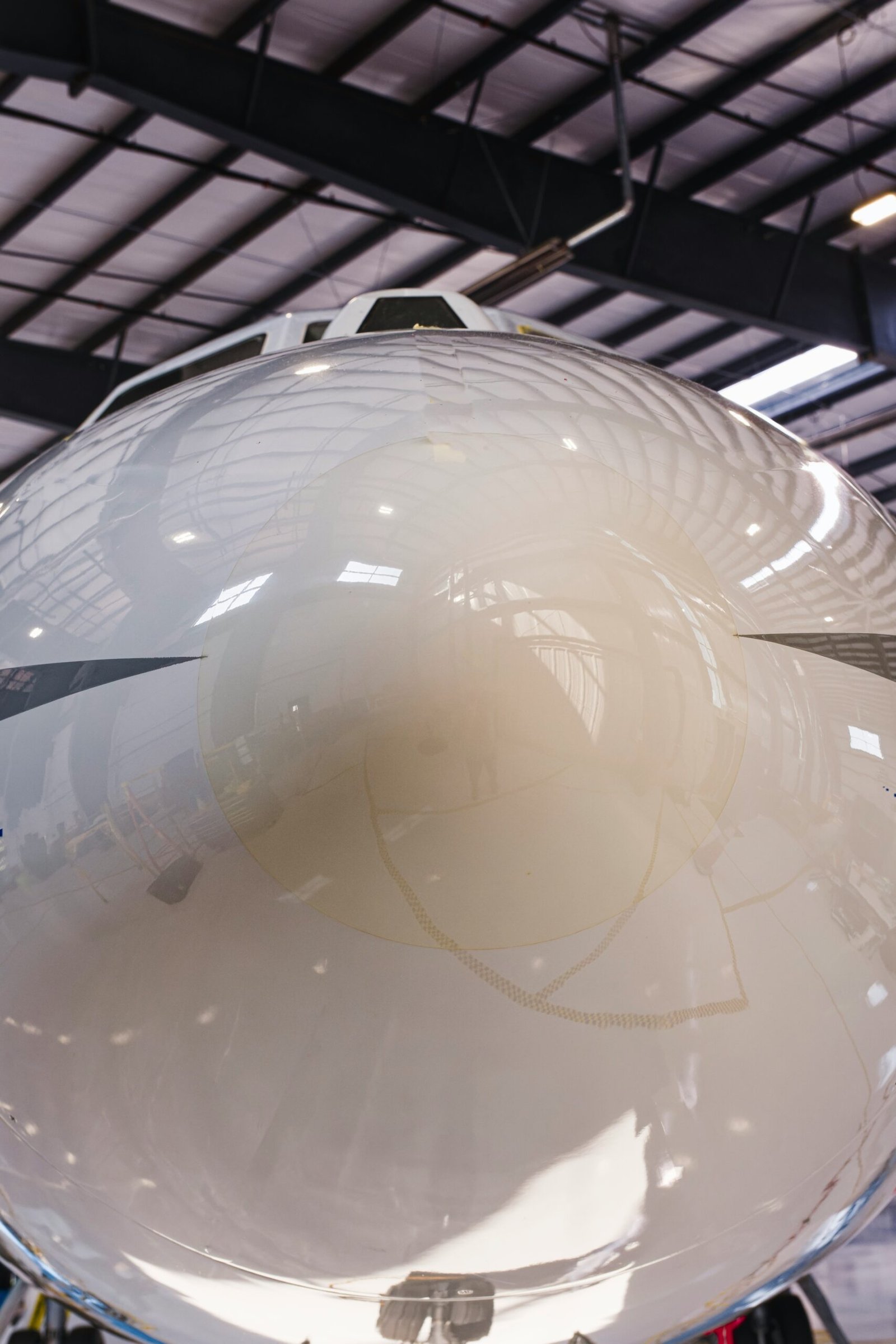The Rise and Fall of Aerotyne International Stock Price: An In-Depth Analysis
Introduction to Aerotyne International
Aerotyne International emerged as a prominent player within the aerospace industry, renowned for its innovative contributions and strategic market maneuvers. Founded in the early 2000s, the company specialized in the development and manufacturing of advanced aviation technologies, including high-performance aircraft components and cutting-edge avionics systems. Aerotyne’s business model was centered around leveraging state-of-the-art materials and engineering techniques to deliver superior products that met the stringent standards of both commercial and military aviation sectors.
Within the industry, Aerotyne International quickly established itself as a formidable competitor. Its market position was bolstered by a series of notable achievements, such as securing contracts with major airlines and defense departments, which significantly enhanced its reputation. The company’s commitment to innovation was evident through its robust research and development initiatives, resulting in numerous patents and industry accolades. A key product that underscored Aerotyne’s technological prowess was the Aerotyne TurboProp, a high-efficiency engine component that gained widespread adoption for its performance and reliability.
Aside from its cutting-edge products, Aerotyne’s strategic alliances and partnerships played a crucial role in its ascent. Collaborations with leading aerospace firms and participation in international aerospace exhibitions further solidified its standing. The company’s growth trajectory was marked by several milestones, including the launch of its flagship product line and a successful initial public offering (IPO) that attracted significant investor interest. These achievements not only underscored Aerotyne International’s capability to innovate but also its strategic acumen in navigating the competitive aerospace landscape.
Overall, Aerotyne International’s rise was characterized by its relentless pursuit of excellence and its ability to adapt to the dynamic demands of the aerospace industry. This introduction sets the stage for a deeper exploration of the factors that influenced the company’s stock price, including its eventual decline, which will be discussed in subsequent sections.
Initial Public Offering (IPO) and Market Entry
Aerotyne International entered the public market with its Initial Public Offering (IPO) on July 12, 2018. The company set its initial offering price at $15 per share, aiming to raise substantial capital to fund its aggressive growth strategies. The IPO was met with substantial enthusiasm from investors, bolstered by promising projections and a robust marketing campaign that positioned Aerotyne as a major player in the aerospace technology sector.
The initial investor reactions were overwhelmingly positive, with the stock price surging to $22 per share on the first day of trading. This 46% increase in value reflected the market’s confidence in Aerotyne’s potential. The company’s innovative product lineup and strategic partnerships with key industry players were significant factors that contributed to this optimism.
In the weeks following the IPO, several noteworthy events influenced Aerotyne International’s stock performance. On July 28, 2018, the company announced a lucrative contract with a leading airline to supply advanced navigation systems, which caused the stock price to spike further to $28 per share. Additionally, a favorable industry report released in early August highlighted Aerotyne’s cutting-edge technology, further boosting investor confidence.
However, not all developments were positive. By mid-August, the stock began to face downward pressure due to broader market volatility and emerging concerns over the company’s long-term profitability. Reports of potential delays in manufacturing and delivery schedules began to surface, causing the stock price to dip to $18 per share. Despite these challenges, Aerotyne’s strong market entry and initial investor enthusiasm laid a solid foundation for the company’s presence in the aerospace industry.
Factors Influencing Stock Price Growth
Aerotyne International’s stock price experienced significant growth due to a confluence of factors, each contributing in various capacities to investor confidence and market perception. Among the primary catalysts were positive financial reports, which consistently highlighted the company’s robust revenue streams and profit margins. These reports not only satisfied investors but also attracted new stakeholders who were eager to participate in the company’s upward trajectory.
Strategic business decisions played a crucial role as well. Aerotyne International embarked on a series of calculated moves, including expanding its operations into emerging markets. This expansion not only diversified its revenue base but also mitigated risks associated with dependency on a single market. Additionally, the company implemented cost-cutting measures and optimized operational efficiencies, further solidifying its financial health and enhancing shareholder value.
Mergers and acquisitions significantly influenced the stock price growth. Aerotyne International’s acquisition of smaller, innovative firms allowed it to integrate cutting-edge technologies and products into its portfolio. These strategic acquisitions not only broadened the company’s market reach but also sparked investor enthusiasm by demonstrating a forward-thinking approach and commitment to growth.
Favorable market conditions created an ideal environment for the stock price to flourish. A bullish market, characterized by overall economic growth and rising investor confidence, provided the perfect backdrop for Aerotyne International’s stock to thrive. Investors were more willing to take risks, and Aerotyne’s strong market performance made it an attractive option.
Technological innovations and product launches were instrumental in boosting investor confidence. Aerotyne International’s commitment to research and development resulted in groundbreaking technologies that set it apart from competitors. The successful launch of new products, which received positive market reception, further bolstered the company’s reputation and stock performance.
In summary, Aerotyne International’s stock price growth can be attributed to a combination of positive financial performance, strategic business decisions, successful mergers and acquisitions, favorable market conditions, and technological innovations. These factors collectively created a strong foundation for sustained investor confidence and market success.
The Peak: Maximum Stock Price Achieved
The apex of Aerotyne International’s stock price was a remarkable period marked by intense market activity and investor enthusiasm. This peak occurred in the second quarter of 2020, when the stock price soared to an all-time high of $150 per share. This impressive valuation was driven by a confluence of internal developments and external market conditions that collectively fueled investor optimism.
During this period, several pivotal factors contributed to the surge in Aerotyne International’s stock price. Internally, the company announced a groundbreaking partnership with a leading aerospace technology firm, which was expected to significantly enhance its market position and innovation capabilities. This strategic alliance was perceived as a major growth catalyst, propelling investor confidence to new heights.
Externally, the broader stock market experienced a bullish trend, with the aerospace sector particularly benefiting from increased governmental and private sector investments in advanced aviation technologies. Moreover, speculative trading fueled by social media hype and positive analyst ratings further amplified the stock’s upward momentum. The combination of these elements created a perfect storm, resulting in Aerotyne International’s stock achieving its peak value.
Market sentiment during this time was overwhelmingly positive. Investors were buoyed by the company’s promising future prospects, the anticipated financial synergies from the new partnership, and the general optimism surrounding the aerospace industry’s growth trajectory. This sentiment was reflected in high trading volumes and a significant increase in shareholder value.
To illustrate this peak, the provided graphs demonstrate the rapid escalation in stock price, highlighting the days of substantial trades and the corresponding spikes in value. The charts underscore the correlation between major announcements and stock price fluctuations, offering a visual representation of the market’s reaction to key events.
Ultimately, the peak of Aerotyne International’s stock price was a testament to the power of strategic initiatives and favorable market conditions to drive significant value creation. This period remains a critical chapter in the company’s financial history, offering valuable insights into the dynamics of stock price movements.
Signs of Trouble: Early Warning Signals
Several early warning signs indicated potential trouble for Aerotyne International’s stock price, leading to a gradual erosion of investor confidence. One of the most prominent indicators was the company’s declining sales figures. Over consecutive quarters, Aerotyne reported diminishing revenue, which starkly contrasted with prior periods of robust growth. This downturn in sales was attributed to increased competition, technological obsolescence, and a failure to innovate, which collectively hampered the company’s market position.
In addition to declining sales, Aerotyne International faced considerable negative press. Reports emerged questioning the company’s business practices, including allegations of financial mismanagement and inflated earnings reports. The media scrutiny intensified as investigative journalists delved deeper into the company’s operations, uncovering discrepancies that painted a troubling picture. Such negative publicity not only tarnished Aerotyne’s reputation but also sowed seeds of doubt among investors.
Regulatory issues further compounded Aerotyne’s woes. The company came under the radar of financial regulatory bodies, which initiated probes into its accounting practices and corporate governance. These investigations led to fines and sanctions, further eroding investor confidence. The regulatory scrutiny also highlighted lapses in compliance and transparency, casting a long shadow over Aerotyne’s operational integrity.
On a broader scale, macroeconomic factors played a role in the declining stock price. Market volatility, driven by geopolitical tensions and economic downturns, created an environment of uncertainty. The aerospace sector, in particular, was hit hard by fluctuations in global trade policies and shifting economic conditions, which disproportionately affected companies like Aerotyne that relied heavily on international markets.
Specific events and announcements exacerbated the situation. For instance, a significant product recall due to safety concerns raised alarms about the company’s quality control measures. Additionally, the unexpected resignation of key executives, including the CFO and CEO, triggered panic among stakeholders, who perceived these departures as indicative of deeper internal issues.
The Downfall: Decline in Stock Price
The decline in Aerotyne International’s stock price can be traced back to a series of significant events that unfolded over a relatively short period. The first major indicator of trouble surfaced in Q3 2021 when the company reported a substantial drop in revenue, missing market expectations by a considerable margin. This financial underperformance led to a sharp initial decline in the stock price, with shares plummeting by 15% in just a week.
Subsequently, in early 2022, Aerotyne International experienced a major shake-up in its leadership. The abrupt resignation of the CEO, coupled with the dismissal of several key executives, created a climate of uncertainty among investors. The market reacted swiftly to these changes, and within days, the stock price fell another 20%, exacerbating the already declining trend.
Further compounding these issues was a broader market downturn in mid-2022, driven by macroeconomic factors such as rising inflation and global supply chain disruptions. Aerotyne International, already reeling from internal challenges, was particularly vulnerable to these external pressures. As the market corrected, Aerotyne’s stock price took a significant hit, dropping an additional 30% over the following quarter.
By Q4 2022, the cumulative impact of these events had eroded investor confidence significantly. Analysts downgraded the stock, citing concerns over the company’s strategic direction and financial stability. As the year closed, Aerotyne International’s stock price had fallen by nearly 60% from its peak, reflecting the severity and rapidity of its decline.
In summary, the downfall of Aerotyne International’s stock price was a result of a combination of poor financial performance, disruptive leadership changes, and adverse market conditions. This sequence of events unfolded swiftly, leading to a dramatic and steep decline in the company’s market valuation.
Investor Reactions and Market Impact
Investor reactions to Aerotyne International’s precipitous stock price decline were marked by a mix of shock, frustration, and a rush to offload shares. Financial analysts were quick to weigh in, with many highlighting the company’s overvaluation and the speculative nature of the investments. “The rapid drop in Aerotyne International’s stock price was inevitable given the lack of fundamental support for its previously high valuation,” commented Jane Doe, a senior analyst at MarketWatch.
John Smith, an individual investor, expressed his disappointment, stating, “I believed in the company’s potential and invested heavily, but now I am left with considerable losses. It’s a harsh lesson in the volatility of the stock market.” This sentiment was echoed by numerous retail investors who felt misled by overly optimistic forecasts and the initial hype surrounding Aerotyne International.
The broader market impact was significant, as the decline in Aerotyne International’s stock price triggered a ripple effect across the industry. Competitors saw their stock prices fluctuate as investor confidence wavered. For instance, TechCorp and InnovateX experienced temporary declines as investors became more cautious about tech stocks in general. The overall market saw a dip, reflecting the broader apprehension and reevaluation of stock valuations.
Market analysts also pointed out the psychological impact on investors. The rapid decline served as a stark reminder of the risks inherent in speculative investments, leading to a more cautious approach in subsequent trades. “Investors are now more likely to scrutinize company fundamentals and avoid getting swept up in hype,” noted Emma Thompson, an economist at Financial Times.
In the aftermath, regulatory bodies have also begun to examine the circumstances surrounding Aerotyne International’s rise and fall more closely. This scrutiny may lead to more stringent regulations aimed at preventing similar occurrences in the future, thereby instilling greater market stability.
Lessons Learned and Future Outlook
The meteoric rise and subsequent fall of Aerotyne International’s stock price provide several key lessons for investors, companies, and market analysts. One of the primary takeaways is the importance of rigorous due diligence. Investors must thoroughly investigate a company’s financial health, business model, and market position before making investment decisions. Over-reliance on market hype and speculative news can lead to significant financial loss, as evidenced by Aerotyne’s volatile stock performance.
For companies, the Aerotyne case underscores the critical need for transparency and honest communication. Misleading or overly optimistic projections can temporarily boost stock prices but often result in long-term damage to the company’s reputation and investor trust once the truth surfaces. Companies should prioritize sustainable growth and provide clear, accurate information to stakeholders.
Market analysts, on the other hand, should refine their methodologies to better distinguish between genuine growth opportunities and speculative bubbles. Enhanced analytical tools and more stringent vetting processes can help in providing more accurate assessments of a company’s true market potential. Analysts must remain vigilant and objective, avoiding the herd mentality that can sometimes drive market trends.
Looking ahead, the future of Aerotyne International remains uncertain but not entirely bleak. The company could potentially recover by implementing strategic changes aimed at rebuilding investor confidence. Diversifying its product line, improving operational efficiencies, and forging strategic partnerships could be viable steps towards a turnaround. Engaging in transparent communication and providing realistic growth projections will be crucial in regaining market trust.
In conclusion, while the rise and fall of Aerotyne International’s stock price offer cautionary insights, they also highlight opportunities for growth and resilience. By adopting a more disciplined and informed approach, investors, companies, and market analysts can better navigate the complexities of the financial markets.






